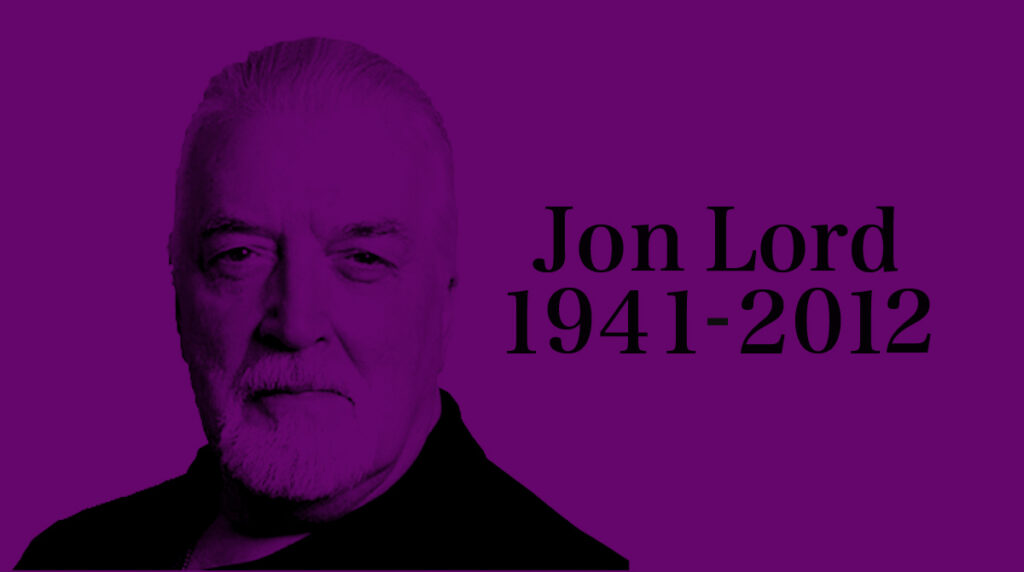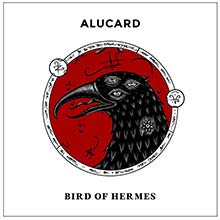
10 years without Jon Lord, The Maestro of Hammond – 10 anni senza Jon Lord, Il maestro dell’Hammond
UK/IT version – Great Britain, at the turn of the sixties and seventies, was the home of the great rock keyboard players. Keith Emerson or Rick Wakeman enchanted thousands of adoring fans behind walls of synthesizers. One of the greatest, however, stubbornly continued to play only the good old Hammond organ. His name was Jon Lord.
Jon Lord was born in Leicester on 9 June 1941.
After moving to London, he graduated from the London Drama Center and played jazz piano with some ensembles to support himself. The discovery of Jimmy Smith and the Hammond organ is a typical love at first sight for Jon. While developing his revolutionary recipe that mixes classic and rock-blues.
As a session man, for example, he records the first Kinks album; with him, in the studio, a session player who will lead the way with the guitar: Jimmy Page. His bands include: The Artwoods, Red Bludd’s Bluesicians and the St Valentines Day Massacre. Some time later he forms a very short-lived band, Santa Barbara Machine Head. Curiously, the ensemble bears the name of one of Deep Purple’s most important albums.
In this period, however, the key episode is the formation of yet another band, The Flowerpot Men. The new project has the merit of meeting Lord and bassist Nick Simper, as well as manager Tony Edwards; from this comes the collaboration with the guitarist Rit Blackmore. With the addition of Rod Evans on vocals and Ian Paice on drums, the first of the Deep Purple lineup is ready for recording.
With the arrival of Gillan, Deep Purple is born, devoted to hard rock, precursors of heavy metal. Jon Lord with his duels with Blackmore’s guitar, his rides divided between the love for Bach and that for the blues carves out a role of great importance.
Lord’s sound is heavy. The trick – after all – is simple; Jon begins experimenting by connecting the Hammond to Marshall amplifiers for the electric guitar. The musician is trying to get a volume equal to that of Blackmore, the result is portentous. The Hammond sounds gloomy, its lead parts are able to rival those of the six-string heroes.
When he and Ritchie Blackmore were the two captains of the Deep Purple vessel, harmony reigned supreme. With the arrival of Gillan and, perhaps, with the great success, everything changes. Lord has a calm character, his great love is not for fame, only for music. Blackmore becomes more and more bizarre, no direction taken seems to be the right one for him; his clashes, with Gillan first, with Coverdale then and finally with everyone, mark the end of the first Deep Purple. The death of Tommy Bolin who replaced him is the epilogue of the first part of Deep Purple’s history.
.Jon Lord was at the time a very rich young man who divides himself between keyboards, luxury and a thousand projects.
Back to play with Coverdale in Whitesnake, then when Deep Purple decide for a millionaire reunion, Jon Lord certainly does not back down, this second part is also full of hits, especially live, with six other records and many fights between Gillan and Blackmore. Then Steve Morse will come to replace Blackmore. Lord definitively left Deep Purple – the love of a lifetime – in 2002.
Perhaps he is tired and wants to spend a quiet old age, between classic collaborations and some solo outings. Unfortunately, it will only be so in part; a serious illness hit him in 2011 and took him away the following year, when Jon Lord was seventy-one.
La Gran Bretagna, a cavallo tra gli anni Sessanta e Settanta, fu la patria dei grandi tastieristi rock. Keith Emerson o Rick Wakeman incantavano migliaia di fan adoranti, dietro muri di sintetizzatori. Uno dei più grandi, però, continuava ostinatamente a suonare solo il buon vecchio organo Hammond. Il suo nome era Jon Lord.
Jon Lord nasce a Leicester il 9 giugno del 1941.
Trasferitosi a Londra si laurea al Drama Centre di Londra e per mantenersi suona il piano jazz con alcune formazioni. La scoperta di Jimmy Smith e dell’organo Hammond è per Jon il tipico colpo di fulmine. Mentre mette a punto la sua rivoluzionaria ricetta che mescola classica e rock-blues,.
Come session man, per esempio, registra il primo album dei Kinks; con lui, in studio, un turnista che farà strada con la chitarra: Jimmy Page. Tra le sue band ricordiamo: The Artwoods, la Red Bludd’s Bluesicians e i St Valentines Day Massacre. Qualche tempo dopo forma una band dalla vita brevissima, i Santa Barbara Machine Head. Curiosamente, il complesso porta il nome di uno degli album più importanti dei Deep Purple.
In questo periodo, tuttavia, l’episodio chiave è la formazione dell’ennesima band, i The Flowerpot Men. Il nuovo progetto ha il merito di fa incontrare Lord e il bassista Nick Simper, nonché il manager Tony Edwards; da queste conoscenze scaturisce la collaborazione col chitarrista Ritchie Blackmore. Con l’aggiunta di Rod Evans alla voce e di Ian Paice alla batteria, la prima formazione dei Deep Purple è pronta per il debutto.
Con l’arrivo di Gillan Nascono i Deep Purple votati all’hard rock, precursori dell’heavy metal. Jon Lord con i suoi duelli con la chitarra di Blackmore, le sue cavalcate divise tra l’amore per Bach e quello per il blues si ritaglia un ruolo di grande rilievo.
Il suono di Lord è pesante. Il trucco – in fondo – è semplice; Jon inizia a sperimentare collegando l’Hammond agli amplificatori Marshall per la chitarra elettrica. Il musicista sta cercando di ottenere un volume pari a quello di Blackmore, il risultato è portentoso. L’Hammond suona cupo, le sue parti soliste sono in grado di rivaleggiare con quelle degli eroi della sei corde.
Quando lui e Ritchie Blackmore erano i due capitani del vascello Deep Purple, l’armonia regnava sovrana. Con l’arrivo di Gillan e, forse, col grande successo, tutto cambia. Lord ha un carattere pacato, il suo grande amore non è per la fama, solo per la musica. Blackmore si fa sempre più bizzoso, nessuna direzione presa pare essere per lui quella giusta; i suoi scontri, con Gillan prima, con Coverdale poi e infine con tutti, segnano la fine dei primi Deep Purple. La morte di Tommy Bolin che lo aveva sostituito é l’epilogo della prima parte della storia dei Deep Purple.
Jon Lord è all’epoca un ricchissimo giovane che si divide tra le tastiere, il lusso e mille progetti.
Torna a suonare con Coverdale nei Whitesnake, poi quando i Deep Purple si decidono per una milionaria reunion, Jon Lord non si fa certo indietro, anche questa seconda parte è ricca di successi, specie dal vivo, con altri sei dischi e tante liti tra Gillan e Blackmore. Poi arriverà Steve Morse a sostituire Blackmore. Lord abbandona definitivamente i Deep Purple – l’amore di una vita – nel 2002.
Forse è stanco e vuole passare una vecchiaia tranquilla, tra collaborazioni classiche e qualche uscita solista. Purtroppo, sarà così solo in parte; una grave malattia lo colpisce nel 2011 e lo porta via l’anno dopo, quando Jon Lord ha settantuno anni.



Prisca Girardi
16 July 2022 14:59Jon Lord riposa sotto una umile lapide in un cimitero di un piccolo villaggio in cui ha vissuto l’ultima parte della sua vita ; e i cui abitanti sono per la maggior parte ignari che quel signore che era arrivato a viverci fosse uno dei più grandi musicisti dell’epoca. Quando si parla di ricerca di solitudine e semplicità.